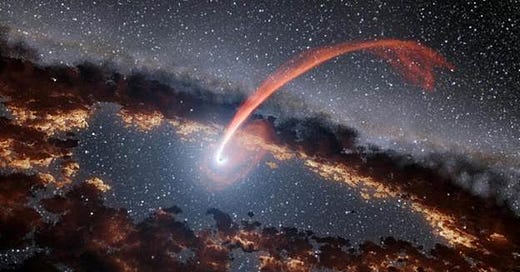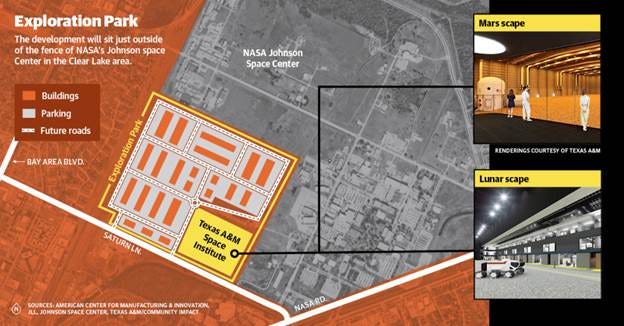Second Biggest Explosion, Weather, Space Industry Budget Overviews and Commentary, Quick Hits
Thanks: Silver Medal Syndrome, Tunguska, GRB-08091C, Extreme Nuclear Transients, Titan, Bonaire weather, (seriously) Bryce Tech + SIA, Aerospace, Exploration Park, Jules Verne, Gen Steven Kwast (ret)
The Second Biggest Explosion Ever
It is a rare thing that the second biggest anything makes the news. As a total tangent there are even studies about how awful some people feel at coming in second place even when there are hundreds of others who fared worse.
So, just get us all on the same page, we aren’t talking here about tiny explosions like nuclear explosions. Volcanoes? They don’t even start to make the top ten list. What about that thing with all the trees flattened in Russia that is such a topic for late night conspiracy TV shows (hey, I couldn’t sleep, don’t judge me)? That is only number 7 or 8 depending on whose list you look at. Supernovae? Now you are talking, but even the biggest one of those, the famous SN2006GY, is only the OLD number three. The OLD number two was, of course, GRB (for gamma ray burst) 08091C, an explosion that released an amount of energy equal to 7000 times what our sun will put out in its lifetime. Here is the old list.
Nope, none of those hit number one. Number one on our charts for a 14 billionth straight year is the Big Bang, and honestly it is hard to see it losing the crown anytime soon. But that number two spot has just been taken by something new.
It turns out that supermassive black holes at the centers of galaxies are eating stars so large they are classified using the word ‘giant’. The explosions (note the plural there…this is going on all the time) are called ‘extreme nuclear transients’. Now, I don’t know who’s in charge of all this but they have got their name game going strongly. None of this GRB-3.14159 stuff going on – these folks have terrifying things like ‘supermassive’, ‘giant’, and ‘extreme nuclear’ in the names! No wonder I have seen so many versions of this article.
Rather than go into it, I will leave it to you to read more and look at cool pictures, but articles about this are here and here and here (this last article is especially good and uses words like “monsters” and “shredding”. Ergo, press coverage galore!
Weather Is Always With You … (but only in a few places)
There is always weather. We check it and are affected by it just about every day. We complain about it, but you regularly hear people talk about how, when they moved to some place with “perfect weather (see image below)” they “miss having seasons”. Really?? That feels like something that has to be experienced for a long time in order to appreciate it.
That perspective, even having weather, is a very Earth-centric notion. In fact, so far as we can tell, most of the Universe, even most of our own solar system doesn’t have any atmospheric weather at all. Yes, there is the nagging fact that atmospheres are exceedingly rare, but still.
So, I thought it was cool to find an article about a place in our own solar system that has weather too, just like us.
Clouds? Check! Rain? Check? Wind? Yep on that too.
But high temperatures? Ummm…a little less so and that means their version of weather isn’t quite the same as ours.
Titan is Saturn’s largest moon. Temperatures there clock in at around -290F. So, pretty chilly. And all that rain … (as well as all of their rivers, lakes, and oceans), it’s made of methane and other flammables that really makes one wonder what would happen if you lit a match there. Titan has seasons including a warmer summer which leads to increased cloudiness and rainfall, and the rain and resultant flows of surface liquid lead to erosion just like on Earth. All of this from recent studies NASA has done using a variety of telescope and spacecraft data. Here is a good article on the topic.
The Industry … In One Chart
I started a recent post on The Organizing Thought with this chart, but the chart is so good I am going to use it here too. Even if you not at all into policy and budgets and stuff and just like the techno-nerd world of space, this chart matters. It is from an annual report funded by the Satellite Industry Association and created by the awesome folks at Bryce Tech. I have seen the full report (awesome and thorough as always), but this one chart has enough to get you started.
Takeaways? You can see them. My takes, very briefly:
· The ‘space economy’ in 2024 was well over 400 billion dollars. That is a lot of money, a lot of jobs, a lot of satellites and launches, and all of those figures were higher than last year’s reported numbers.
· The United States dominates almost all of this activity and by nearly every measure whether you count in dollars, satellites, launches, or technologies. If you want another amazing few charts on this, just check out this one, again by Bryce Tech, that shows all launch activity in JUST the first quarter of 2025. Stunning.
· As a result of higher numbers of everything, costs of everything are coming down. Cost per pound of stuff delivered to orbit continues to fall.
· Technologies in a recently added category, “Space Sustainability” which involves things like in-space assembly, manufacturing, debris removal, situational awareness, and others are starting to generate actual revenue – that is “be used”.
· If you are looking for a “good news about space stuff”, chart, this is it.
Here are a couple more article about budget stuff for the wonks among you. I know this wears out some folks quickly, but these (here and here) were decent resources. I talk more about them over on my most recent post on The Organizing Thought.
Some really quick hits:
· NASA’s Johnson Space Center just signed three new (and large) partners for its “Exploration Park”. The park exists to facilitate a stronger and more permeable relationship between the activities at the center and the industries that might benefit from the NASA work while also leveraging that work for other, non-NASA things. Why do I put this here as ‘interesting’? Because I think there is a reasonable chance that you’ll see more of this sort of thing as the NASA Centers kinda sorta evolve into ‘hubs’ (things well-ordered around a ‘center of mass’ and which connect things together without having to be ‘the center’). Those of you with a subscription to Aviation Week can see a more recent article here. Here is another one.
· Just this week, the Senate committee that oversees NASA proposed an additional 10 billion dollars for the agency’s budget as part of something called a ‘supplemental’ appropriation. It is all for exploration stuff and for the centers that support such things, and you can read about it at the link above. BUT, the thing I found really interesting was the duration, the lifespan, of the proposed funds. Unlike ‘normal’ funds that NASA gets, these funds would not expire (could still be spent) for ten years and don’t even have to be obligated (put onto some sort of contract) until the end of 2028. Cheer or fume as you wish about the proposal, I offer that having longer term funding for big things makes a lot more sense than the complete uncertainty often associated with NASA budgets items. So, a hint: when the time comes for the next gigantic telescope (HWO, are you listening?) this is how you want your money. Note that this stuff is at the bottom of the linked article, so I expect very few people will have read it.
· One of the things that can be really useful as you peer forward in time (i.e., predict stuff and try to plan for the stuff you predict) is to read the speeches, posts, and articles written by those who might be “influential”. As such, maybe there are worse ideas than reading up on this guy’s stuff. Here’s an article by him, one about his thoughts on a particular space technology (which, I note, is the subject of some upcoming demonstrations now that 5 years have passed), several interviews he has given in recent years (the first one is hard to hear), and some basic background.
· This isn’t space, but it somehow feels related since the first sentence refers to Jules Verne (though instead of “From Earth to Moon”, this is more related to “Journey to the Center of the Earth”. The Chinese “Deep Ocean Drilling Program” has begun its attempt to drill a hole through the Earth’s crust and reach the point where the Earth’s crust and mantle meet. The article is a decent one and worth some spare time.
· The European Space Agency spacecraft PROBA-3, a two – satellite constellation, just set a record for most precise formation flying. The two flew autonomously and maintained their target distance (150 meters) with millimeter accuracy. Such feats of guidance, navigation, and control, are important technologies for many aspects of civil and military space. Here is the article.
As has been the case recently, there is a lot (a LOT) going on, and I know many of you are faced with actual life choices as a result.
So, stay grounded. Consider yourself (it’s not selfish to do this, I promise). For those with a policy bent and stomach for at least one set of perspectives on how some current policies could play out, see The Organizing Thought.
Most importantly, take care of yourself and be up for helping someone who needs help.
Have a great weekend,
J








